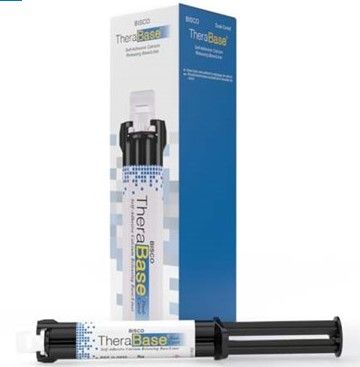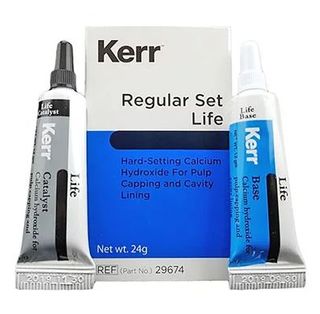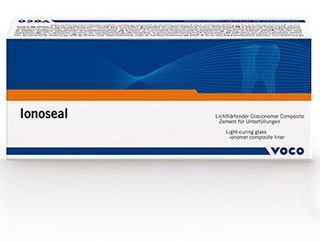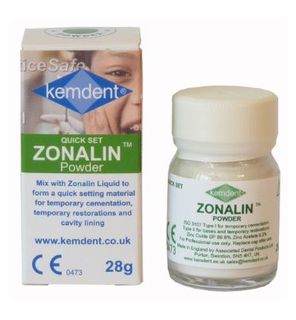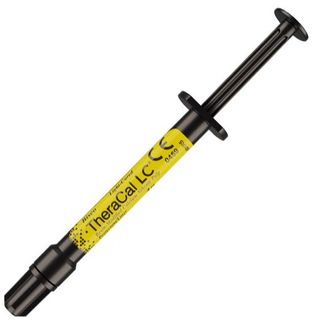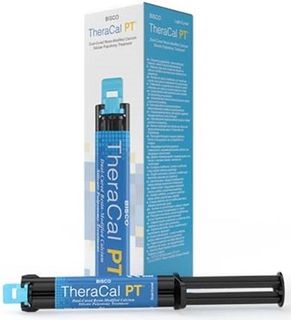- Home /
- RESTORATIVE PRODUCTS /
- LINERS /
- Therabase syringe dual 8g
Products
- ARTICULATING SYSTEMS
- BLEACHING PRODUCTS
-
BURS
- BLUWHITE DIAMOND BURS
- BUR ACCESSORIES
- EDENTA STEEL BURS
- IMPLANT DRILL & BUR KITS
- IMPLANT DRILLS & BURS
- INTENSIV CROWN CUTTING BURS
- INTENSIV DIAMOND BURS
- JET CARBIDE BURS
- LABORATORY BURS
- NORTH BEL CARBIDE BURS
- NORTH BEL DIAMOND BURS
- NSK PICO BURS
- ORAL SURGERY BURS
- ORTHO STRIPS
- PERFECTION PLUS STEEL BURS
- THOMAS STEEL BURS
- WAVE CARBIDE BURS
- COTTON PRODUCTS
- DENTURE PRODUCTS
- DIGITAL DENTISTRY
- ENDODONTIC PRODUCTS
- EQUIPMENT
- FINISHING & POLISHING PRODUCTS
- HANDPIECES
- IMPLANT SPECIALIST
- IMPRESSION MATERIALS
-
INFECTION CONTROL
- AUTOCLAVE POUCHES & REELS
- BIBS & BIB HOLDERS
- CLEANING & DISINFECTION
- COMPLIANCE
- DISPOSABLE TRIPLEX SYRINGES
- DRAPES, COVERS & GOWNS
- EYE & FACE SHIELDS
- GLOVES
- HAND CARE
- HANDLING & MAINTENANCE
- IMPRESSION DISINFECTANTS
- MASKS
- PROTECTIVE SLEEVES & COVERS
- SOAKING TANKS
- SUCTION SYSTEM CLEANERS
- SURFACE CLEANING& DISINFECTION
-
INSTRUMENTS
- DIAGNOSTIC INSTRUMENTS
- ENDO HAND INSTRUMENTS
- EXTRACTION FORCEPS
- HANDLING & MAINTENANCE
- LABORATORY INSTRUMENTS
- MIRRORS
- ORTHODONTIC INSTRUMENTS
- PERIODONTIC INSTRUMENTS
- RESTORATIVE INSTRUMENTS
- SCISSORS
-
SURGICAL INSTRUMENTS
- ANAESTHETIC SYRINGES
- ARTERY & TISSUE FORCEPS
- BONE PRODUCTS & FILES
- ELECTROCAUTERY
- ELEVATORS
- LUXATING INSTRUMENTS
- MEASURING INSTRUMENT
- MOUTH PROP
- NEEDLE HOLDER
- OSTEOTOMES & SINUS LIFT
- PERIOTOMES & PERIOSTEAL
- RETRACTORS
- ROOT TIP PICK
- SCALPEL BLADES & KNIVES
- SCISSORS
- SURGICAL CURETTE
- TISSUE FORCEPS
- TISSUE PUNCH
-
LABORATORY PRODUCTS
- ARTICULATING ACCESSORIES
- ARTICULATING SYSTEMS
- BONDS
- CERAMICS
- DENTURE EQUIPMENT
- DENTURE PRODUCTS
- IMPRESSION MATERIALS
- LABORATORY BURS
- LABORATORY COMPOSITE
- LABORATORY EQUIPMENT
- LABORATORY INSTRUMENTS
- MEASURING INSTRUMENTS
- MICRO MOTORS
- MODEL & CASTING PRODUCTS
- OCCLUSAL SPRAY
- POLISHING PRODUCTS
- RELINE MATERIALS
- WIRE
- MOUTHGUARD MATERIAL
- OCCLUSION PRODUCTS
- OFFICE PRODUCTS
- ORAL CARE PRODUCTS
- ORTHODONTIC PRODUCTS
- RESTORATIVE PRODUCTS
- SUCTION PRODUCTS
-
SURGICAL PRODUCTS
- ABSORBENT PRODUCTS
- DEMONSTRATION MODEL
- DRAPES, COVERS & GOWNS
- HANDLING & MAINTENANCE
-
IMPLANT PRODUCTS
- ABUTMENT HOLDERS
- BENEX EXTRACTION KIT
- BONE MILLS & MALLETS
- BONE SPREADING
- GRAFT & MEMBRANE INSTRUMENTS
- GRATFING & MEMBRANE MATERIAL
- IMPLANT CEMENTS
- IMPLANT DRILL & BUR KITS
- IMPLANT DRILLS & BURS
- IMPLANT DRIVER TIPS
- IMPLANT MAINTENANCE
- IMPLANT RESCUE
- IMPLANT TORQUE WRENCH
- MEASURING INSTRUMENT
- OSSEOINTEGRATION DEVICE
- OSSEOUS COAGULUM TRAP
- OSTEOTOMES & SINUS LIFT
- RETRACTORS
- SCREWS, MESH & TACKS
- IRRIGATION & AIRWAY TUBING
- METAL DISHES
- ORAL SURGERY BURS
- SURGICAL ASPIRATORS
- SURGICAL INSTRUMENTS
- SURGICAL UNITS & HANDPIECES
- SUTURES & WOUND CLOSING
- TEETH
- THERMOFORMING PRODUCTS
- WAX PRODUCTS
- XRAY PRODUCTS
Therabase syringe dual 8g
Description
TheraBase® (NEW!)
TheraBase is a dual-cured, calcium and fluoride releasing, self-adhesive base/liner.
1 Syringe TheraBase (8g), Accessories, Instructions
Dual-Cured, Calcium and Fluoride-Releasing, Self-Adhesive Base/Liner
TheraBase is a dual-cure, calcium and fluoride-releasing, self-adhesive base/liner. Utilizing the THERA technology, TheraBase chemically bonds to tooth structure, and releases and recharges calcium and fluoride ions.1 TheraBase’s calcium release generates an alkaline PH* which promotes pulp vitality.2 It is a dual-cured material that will polymerize even in deep restorations where light cannot reach.
TheraBase is stronger and more durable than other base materials, glass ionomers and resin-modified glass ionomers.* Additionally, it is radiopaque allowing for easy identification on radiographs, providing a quick and effective diagnosis.
Unique Benefits:
- Continuous release of calcium and fluoride ions*
- Self-adhesive, no bonding agents required
- High compressive strength, absorbs occlusal forces without fracturing
- Radiopaque, allows for identification on radiographs and effective diagnosis
- Auto-mix, dual syringe provides a consistent mix for immediate delivery with zero to minimal waste of material
- Dual-cured material that will cure even in deep restorations where light cannot reach
Clinical Benefits:
- Generates an alkaline pH (pH=11*) in minutes, which promotes pulp vitality2
- Contains the adhesion promoting monomer MDP, ensuring reliable and optimal bond to dentin3
Data on file. BISCO, Inc.
1 Gleave CM, Chen L, Suh BI. Calcium & fluoride recharge of resin cements. Dent Mater. 2016 (32S):e26
2T. Okabe, M. Sakamoto, H. Takeuchi, K. Matsushima. Effects of pH on Mineralization Ability of Human Dental Pulp Cells. Journal of Endodontics. Volume 32, Number 3, March 2006.
3Hydrolytic stability of self-etch adhesives bonded to dentin, S Inoue 1, K Koshiro, Y Yoshida, J De Munck, K Nagakane, K Suzuki, H Sano, B Van Meerbeek, Journal of Dental Dentistry, December 2005

